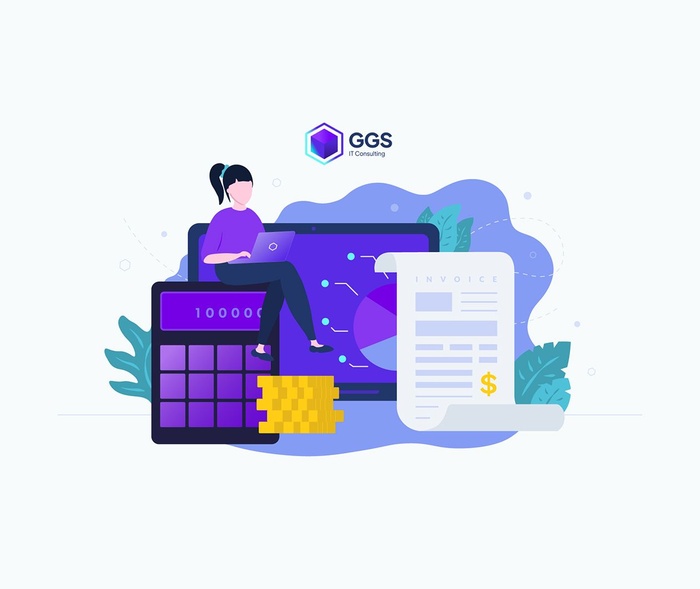Business Process AutomationLearn more
Business process automation - finance and accounting

Business process automation is increasingly being used to reduce operating costs and improve competitiveness. One type of process automation is the Robotic Process Automation technology, which allows virtual robots to carry out repetitive and time-consuming tasks within business processes. Robots can assist humans or replace them in manual and repetitive tasks.
Automation can free up the time of finance and accounting professionals by automating activities such as data entry into systems, handling billing operations or processing payments. Accounting and finance teams can then use their knowledge to make important financial decisions and provide financial management information.
Why does process robotisation work well in finance and accounting?
Financial and accounting operations are largely rule-based, very manual and virtually always carried out within IT systems. This makes them ideal candidates for automation. This is confirmed by the 2019 McKinsey report, pointing out various business areas and their potential for business process automation:

Source https://www.mckinsey.com
Which processes in finance and accounting can be automated?
1. Clearance of accounts payable
Dealing with suppliers is an easy process to automate because it is based on repetitive activities. These are associated with the entire path of an invoice, from verification through to entry into the system and payment. These include tasks such as:
- Downloading electronic invoice/collecting paper invoice;
- Reading data from invoices;
- Manual or (where a workflow system is used) semi-automatic transcription of data to a financial and accounting system, e.g. SAP;
- Validation of document data;
- Processing payments according to agreed terms.
2. Clearance of accounts receivable
From the point of view of business process automation, processing incoming payments is similar to processing financial obligations. Here, however, we are dealing with such extra tasks as:
- Generating an invoice in the ERP system;
- Sending an invoice to the contractor;
- Payment verification;
- Debt collection if payment not received, including sending ‘call for payment’ notices.
3. Posting to the accounts and account coordination
This process is also iterative and rule-based. Nowadays, however, it can involve different steps (which can be difficult to specify) relating to two areas:
- Financial and accounting systems can implement them in a different but still
reproducible way. For example, accounting transactions in SAP look completely different from those in Microsoft AX or IFS. Despite this, they are still carrying out exactly the same task. In SAP alone, there are dozens of different transactions tailored to the specific business and accounting method;
- In different industries, due to complex legislation, the steps involved in account reconciliation can vary.
Account coordination is a process that relies heavily on data from various places like pdf files, spreadsheets, invoices and other similar documents. RPA (Robotic Process Automation) tools can facilitate this because they are perfectly capable of searching, retrieving and matching data.
The following tasks can be found in the accounting process:
- Data entry into the ERP system or indirect tools;
- Describing the data entered, adding information on order numbers or point of origin of the cost;
- Entering the electronic form of the document into the system;
- Downloading or supplying information to other systems e.g. HR/payroll.
4. Closing balances
Who among us has not heard of trouble with closing out the month’s, quarter’s or year’s balance? Sometimes accountants work late into the night. RPA can help structure the process and do its manual part.
Financial closures are processes that depend to a large extent on how previous processes were carried out. However, it is always a sequence of steps. You could say that it is simply a list of tasks that repeats at each closure. Moreover, the tasks carried out in this type of process are repetitive and follow a kind of checklist. They are therefore perfectly suited to RPA.
5. Report automation
For finance and accounting, you need data. As technology evolves, the amount of data sources in companies increases dramatically. Very often data resides in many different systems. This is particularly important for controlling and preparing financial reports.
Automating such a business process is extremely simple, as it is enough to teach the robot what data it should collect and from which system, how it should combine this data, and to whom and how it should be transmitted. The robot can send such prepared reports by e-mail to the CFO on a daily basis.
6. Verification and introduction of suppliers

The automation of financial and accounting processes is all about data processing.
If you look at modern accounting processes, you will see that there is more and more accounting-related activity and less and less bookkeeping as such. This is due to the ever-growing amount of data supplied to finance and accounting departments that must be entered and processed.
That’s why robots are doing so well in this business area. They help retrieve, input and process data so that accountants have time to use their direction and expertise.
Why automate accounting and finance?
The automation of finance and accounting business processes using RPA can be approached in several ways:
- Data consistency and correctness - robots do not make human errors. That is why processes featuring large amounts of data to be transferred and processed can benefit from error-free robots.
- Time saving - data entry and processing activities are time-consuming and usually large-scale. Robots are able to perform these types of operations much faster than humans.
- Continuity of operation - robots can work 24 hours 7 days a week. This ensures continuity of key processes
How do I check if my company is ready for the automation of financial and accounting processes?
As a first step, it is important to determine what objectives the implementation of RPA is supposed to achieve (save money or perhaps ensure process continuity?). Then you should consider whether your processes are mature and structured enough to be automated. If this is the case, you can proceed with your search to identify candidate processes for automation. More on the subject can be found: HERE.
You can do this yourself or look for a partner who has a combination of business and technical experience to help you evaluate your financial and accounting processes.
Free consultation
At GGS IT Consulting, we note that the first steps involved in identifying the potential for RPA can sometimes be difficult for many companies, particularly in SMB. That is why we have prepared a free 30-minute consultation to advise you in that area.
This is a free-of-charge appointment where our consultant will be able to suggest whether robotisation in your organisation makes sense and what steps to take to structure your finance and accounting processes accordingly.
You can make your free consultation HERE.
